Concrete is a heterogenous material having different strengths is different directions. It is strong in compression but inherently weak in tension. The behavior of concrete in tension resembles that of a chalk.
When you apply a compressive force to both ends of a chalk, you will see that it fails or breaks at a higher applied force. On the contrary, when you begin to stretch both ends of a chalk (tensile force), it fails just instantaneously without applying too much force.
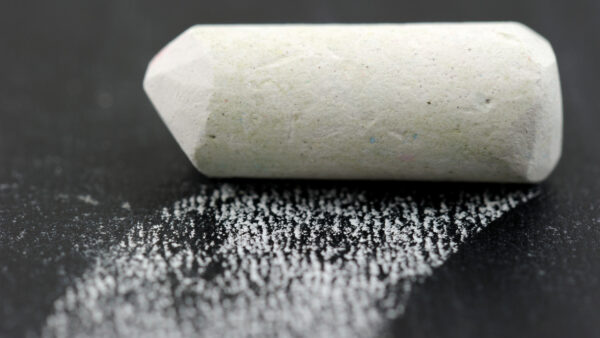
The tensile performance of concrete is analogous to that of a chalk and despite being strong in compression, both materials fail in tension at a considerably less value of applied load.
It is experimentally found that the tensile strength of concrete is approximately one-tenth of its compressive strength. Therefore, when loaded, a concrete member has the tendency to fail just when the stress in it reaches the modulus of rupture of concrete (which is approximated as its tensile strength).
To offset this problem of concrete not being able to reach its full capacity in compression owing to an early failure in tension, reinforcement can be added. Therefore, reinforced concrete is a durable and relatively ductile composite material comprising concrete and embedded steel reinforcement (bars, wires, mesh, etc.), the latter being used to augment the tensile capacity of concrete.
Table of Contents
History of Reinforced Concrete
In the mid-19th century, Joseph Monier put up the concept of reinforcing concrete with metal bars. Ever since then, researchers looked for innovations in improving the performance of concrete by adding different materials that aimed at reinforcing or strengthening the inherently weak-in-tension concrete.
With time, research and advancement in concrete technology, it was found that all the structures subjected to flexural stresses would fail when the part in tension reached the modulus of rupture and the entire member would then collapse with a brittle failure. Henceforth, the necessity of reinforcing concrete for load-bearing structural elements was identified and this was extended to complex structures and further led to the development of prestressed concrete.
In contemporary construction works, all the concrete structures are made up of reinforced concrete. The reinforcement in generally in the form of steel bars that are individually laid at a distance or form a mesh and the concrete is poured all around.
Reinforced concrete performs exceptionally well under all types of loads and its mechanical performance is far better than that of plain cement concrete (PCC). It is therefore, used widely for almost all the concrete construction works now.
What is meant by reinforcement in concrete?
Reinforcement in concrete means the provision or addition of steel. Steel can be in the form of bars, wires, fibers, or mesh and it acts as a barrier to early tensile cracking in the concrete. In other words, the steel reinforcement is assumed to take up the tensile stresses and the concrete takes up the compressive stresses in general.

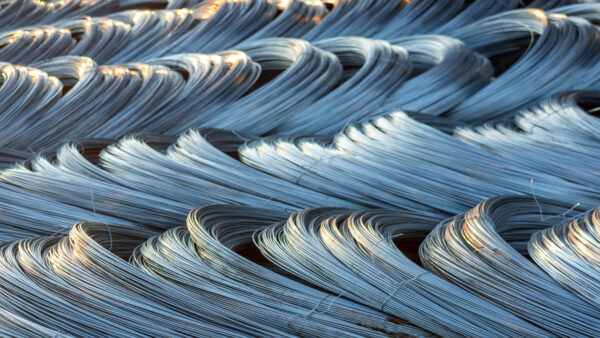
Purpose of Providing Reinforcement in Concrete Members
As already discussed, the purpose of providing steel reinforcement is add a material in concrete that is strong enough to resist tensile stresses and that helps concrete improve its tensile performance and reach its full capacity in compression. The ideal material for reinforcement in concrete is steel.
This is because steel is a homogenous and isotropic material. It gives a warning sign before failure and its mechanical properties are far better than other materials. When added in concrete, it not just prevents early cracking but also makes the structure or structural element durable and strong.
Plain Cement Concrete (PCC) vs Reinforced Cement Concrete

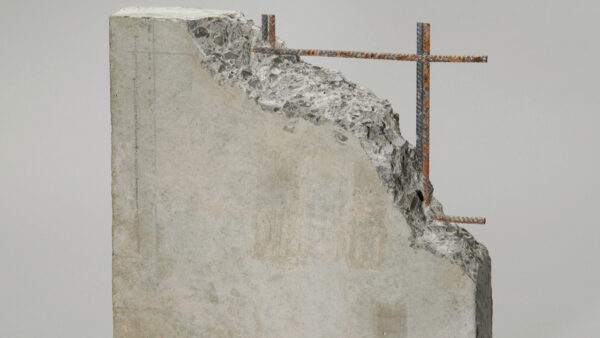
Plain cement concrete (PCC) is a type of concrete that does not contain any type of reinforcement whereas Reinforced Cement Concrete (RCC) contains steel reinforcement. However, apart from this basic difference in their composition, there are some other key differences between the two, knowing which may help you in material selection for your next concrete project.
- Both PCC and RCC are strong in compression; however, PCC is very weak in tension in comparison to RCC. Therefore, for concrete members subject to bending or flexure, the use of PCC is not recommended since the member will fail at a very lesser load developing early cracks on the side subjected to tensile stresses.
- The load-bearing capacity of RCC is substantially greater than that of PCC. This is because the steel-concrete composite in case of RCC well resists all types of applied loading. Given this, the use of RCC can be extended to all important and complex structures such as dams, bridges, etc. On the other hand, the use of PCC is confined to members not subjected to heavy loading such as pavements, sidewalks, flooring, etc.
- PCC is less costly in comparison to RCC. This is because the added cost of steel reinforcement in RCC makes it an expensive material. It is to be kept in mind that unlike other building materials, the cost of steel depends on its weight. More is the quantity of steel you are adding in your concrete element, greater will be the cost incurred.
- PCC (or rather concrete, in general) is a very brittle material. One of the purposes of adding steel reinforcement in concrete is to make it relatively ductile in order to get some warning before failure. This warning usually occurs when the steel in the concrete yields before the concrete reaching its ultimate strain. The yielding of steel will result in signs of cracking on the part subjected to tensile stresses. However, the reinforcement will hold the member together, giving sufficient time for retrofitting before collapsing or failing as a whole.
Types of Reinforcements in Concrete
Reinforcement in concrete is generally made of steel. However, in fiber-reinforced concrete (FRC), many materials (glass, plastic, etc.) can be used as reinforcing fibers in addition to steel fibers.
Steel reinforcement in concrete can be of the following types;
1. Reinforcing Bars (Rebars)
Reinforcing bars are used in concrete to improve its mechanical properties. These bars can be made from different materials as are given below;
Carbon Steel Bars
Steel bars (a type of reinforcing bars or ‘rebars’) are available in different diameters and grades depending upon your need. In reinforced concrete, the steel bars used must be deformed. By the word deformed, it is meant that the bar must have deformations or lugs that tend to improve the steel-concrete bond and prevent a pull-out failure.
As per the American Standard for Testing and Materials (ASTM), there are 4 grades of deformed carbon steel bars namely;
- Grade 40 steel bar has a yield strength of 40 ksi (300 MPa). It is mostly used for small-scale construction works such as in houses, or small commercial buildings.
- Grade 60 steel bar has a yield strength of 60 ksi (420MPa) and is the most common steel grade used in almost all structural members for medium to large scale construction work.
- Grade 75 steel bar has a yield strength of 75 ksi (525 MPa) and is also used in RCC members if a higher strength is targeted.
- Grade 80 steel bar has a yield strength of 80 ksi (550 MPa) and offers very high strength and less ductility that the lower grades.
- Grade 100 steel bar has a yield strength of 100 ksi (690 MPa). This bar offers the highest ultimate and yield strengths and has the highest percentage of carbon content in comparison to the lower grade steel bars.

The higher the steel grade, the greater is its yield strength as well as ultimate strength. The strength increment is because of greater carbon content in higher steel grades. However, with increase in the carbon content, the ductility of steel reduces.
The nominal size of a rebar is specified by its diameter in multiples of 5 or 10 mm in SI units and in multiples of 1/8th of an inch equivalent in mm (10, 13, 16, etc.).
For structural works, especially in reinforced concrete, the ACI code has defined the upper limit of steel grade for different structural members. This is to ensure that proper warning is provided by the member and the purpose of steel addition in concrete is validated.
- For member subjected to flexural stresses, the ACI has enforced an upper limit of grade 80 on the reinforcing steel used.
- For shear and torsion, steel grade greater than 60 ksi is not recommended, otherwise, sufficient warning will not be given by the member prior to failure.
Various types of steel bars are available, providing different degree of ductility and used to serve different causes.
Mild Steel Plain Bars
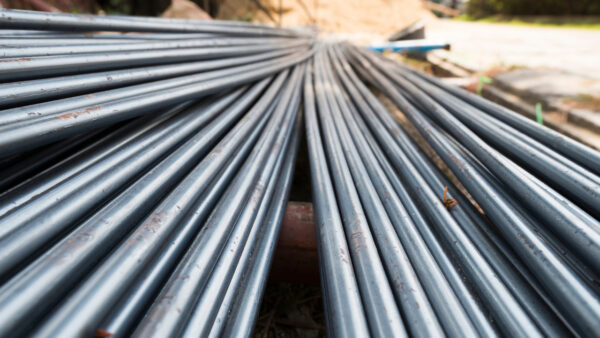
These bars can be cold-worked or hot-rolled and have a plane surface area with no deformations. Plain bars are do not provide a good bind with concrete and are therefore, avoided in reinforced concrete.
This is because when an RCC member is loaded, the stresses on the tension side are taken up by the steel. If the rebar is plain, it will tend to reduce in cross-section under tensile stresses. As a result, even at smaller loads, the tensile stresses will cause transverse strain due to Poison’s ratio effect and the bar will pull out in not time.
Mild Steel Deformed Bars

These bars are an improvement over plain bars as they have deformations on their surface. In all types of ordinary reinforced concrete structures, deformed bars are used. In fact, the ASTM standard has prohibited the use of plain steel bars for all structural purposes except being used as transverse ties.
For all other reinforcement purposes in concrete, deformed bars have been recommended by the standard.
High Yield Strength (HYSD) Deformed Bars (TOR Steel)
This type of rebar is cold-worked (cold-twisted) deformed bar. This means that it has deformations or lugs on the bar surface that help in improving the bond between steel and concrete. This is because when an RCC member is loaded, at very small loads, the contribution of friction and cohesion in the bond strength of member are lost and it is the deformations on the steel surface that solely contribute to the ,member’s bond strength.
TOR bars are available in two grades; grade Fe 415 and grade Fe 500 where Fe denotes iron and the number indicates
These bars have high yield strength and bond strength and are used in large-scale projects where a structure is subjected to massive loads. They have the ability to withstand large stresses without deforming.
Thermo-Mechanically Treated (TMT) Bars
If high ductility is required as in earthquake-prone areas, TMT bars are the best choice. These are high-strength reinforcing bars made by heating steel to a high temperature, followed by cooling and then rolling under controlled conditions.
These bars have a very hard outer core and a relatively soft inner core. They can take up huge tensile stresses and impart ductility and durability at the same time.
They are used in large concrete structures such as dams, bridges, etc. where they provide high strength, corrosion resistance and can withstand high temperatures.
Corrosion Resistant Steel (CRS) Bars
These bars are especially designed for corrosion resistance. It is used in RCC construction that is vulnerable to the attack of corrosion due to any environmental influence. Therefore, in marine environments, chemical plants, or areas with high humidity or carbon dioxide emissions, CRS bars can effectively be used to resist corrosion in steel and ensure longevity of the structure.
Stainless Steel Rebars
The main cause of failure of most of the concrete structural elements is the corrosion in rebar. A plausible reason to use stainless steel bars is to prevent corrosion of steel in the long term. Stainless steel bars have very low carbon content and contain chromium (around 12%) and nickel (around 8 to 12%).
Apart from making the rebar less prone to rusting, stainless steel bars also offer a god combination of strength and toughness. Therefore, they are used in bridges and other medium to large-scale construction works.
Galvanized Rebar
Galvanized rebar is an alloy steel rebar that offers a relatively expensive alternative to prevent corrosion in steel. During the manufacturing process, the rebar is dipped in a zinc solution so as to coat its surface.
The significance of doing so is that the process of rusting is commenced when steel gets exposed to air and moisture. If, by any means, it can be protected from these precursors, the life of the rebar and its effectiveness can be ensured.
Galvanizing the rebar is a great solution to corrosion-related vulnerabilities; however, it is expensive.
Glass Fiber Reinforced Polymer (GFRP) Rebar
GFRP rebars contain embedded glass fibers in a resinous matrix. They have an augmented tensile strength and repeal the possibility of corrosion. Therefore, it is corrosion-free and lightweight which means that you will end up in cost savings because the cost of rebars is a function of their weight.
It can effectively be used in composite construction works to serve structural causes and performs excellently in structures that are directly exposed to water.
Epoxy Coated Rebar
Epoxy coating is another alternative to preventing or delaying corrosion in rebar. However, with the passage of time, the coating may get scratched or chips of the rebar surface, exposing it corrosion-related vulnerabilities.
Welded Wire Fabric (WWF) Rebar
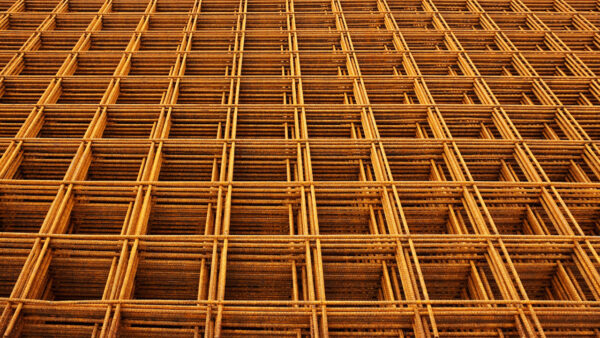
Welded wire fabric (WWF) is a type of reinforcement in concrete that is provided in the form of a mesh or grid pattern. The mesh comprises steel rods or bars made from low carbon steel that are welded together and the concrete is poured or cast all around the mesh.
This type of reinforcement provides additional strength and stability to concrete structures. They can be used in many RCC members such as slabs, walls, bridge decks, etc.
Expanded Metal Rebar

This type of reinforcement resembles WWF because of a mesh. It is made by cutting and stretching steel sheets to form a pattern of interconnected diamond shapes. The purpose of such a reinforcing mesh is to increase the surface area of concrete for better bond strength.
It can also be used in walls, slabs, parking garages, etc. It helps prevent cracking in concrete when subjected to heavy loading and provide added strength and stability to RCC structures.
-
Prestressing Steel Reinforcement
Prestressing steel reinforcement is used in prestressed concrete members. This type of reinforcement is available in the form of strands of steel. Each strand comprises steel wires that are twisted together around a central wire.
The strands are placed in the concrete formwork and prestressed. The resulting concrete member may either be pretensioned or post-tensioned depending upon at which stage the strands are stressed.
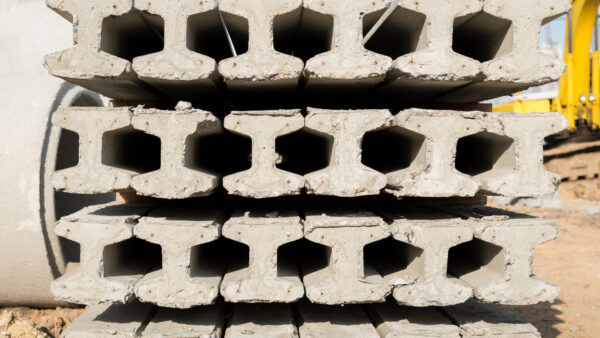
In pretensioned concrete members, that are mostly prefabricated at plants, the steel strands are stretched to the required level of tension, the concrete is cast, and once it hardens, the prestressing force is released.
In post-tensioned concrete members, the strands are placed in ducts and anchored at the member ends. The concrete is cast first following by tensioning of the strands in the ducts. Once the concrete hardens, the prestress force is released and transferred to the member by bearing on the ends of it.
Prestressing strands have two grades, as specified in the ASTM standard. These grades are as follows;
- Grade 250 steel strands have an ultimate strength of 250 ksi (1725 MPa).
- Grade 270 steel strands have an ultimate strength of 270 ksi (1860 MPa).
-
Fiber Reinforcement
Fiber reinforcement is another method of improving the mechanical performance of concrete. Small, discrete and discontinuous fibers are added into the plastic concrete to bridge the cracks and provide post-cracking ductility to the concrete.
The fibers may be of different shapes such as;
- Flat or round
- Straight
- Crimped
- Irregular
- Hooked
- Deformed
These fibers are added in addition to the reinforcing bars because the primary purpose of adding them is not to get an increase in the member strength, rather they are added to impart ductility and prevent cracking in the concrete microstructure.
Many materials can be used as fibers in the concrete. Based on this, the following types of fibers are used in the concrete;
- Steel fibers
- Glass fibers
- Carbon fibers
- Asbestos fibers
- Polymeric fibers
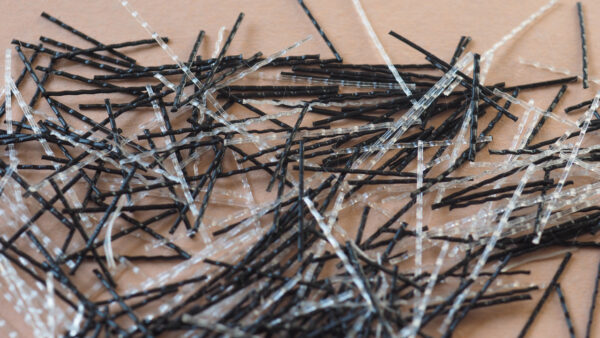
Fiber-reinforced concrete can be used in structural and non-structural members depending upon the type of fiber used.
- Asbestos fibers can be used as a reinforcing material in pipes and roofing sheets.
- Steel fibers can be used in pavements, shotcrete, dams, etc.
- Glass fibers are mostly used in non-structural members such as precast panels.
Steel-Concrete Composite Action
Reinforced concrete members are versatile; be it axial stresses, flexural stresses, or torsional stresses, they can be designed for all types of loading and in all geometrical shapes. However, the design process of an RCC member is based on a clear understanding of how the two materials, steel and concrete, will behave together when loaded.
For a proper composite action to be developed, it must be ensured that at the interface of steel and concrete, there exists strain compatibility. This means that the strain in steel should be equal to the strain in concrete at the interface of the two.
To ensure this compatibility, the bond between steel and concrete should be adequate to allow the two materials to behave as one and transfer forces. There are three mechanisms by which the bond between steel and concrete exists in an RCC member namely;
- Adhesion between the concrete and rebar
- Friction between steel and concrete at interface
- Bearing on the deformations (ribs) of the bar
The first two effects are quickly lost when an RCC member is loaded and the bond between steel and concrete is governed by these deformations on the bar surface.
If composite action between steel and concrete is lost, the bar will simply pull out and once this happens, the entire tensile stresses are to be borne by the concrete. Since concrete proves to be a disaster when loaded in tension, the structural member will collapse in no time.
Properties of Reinforced Concrete
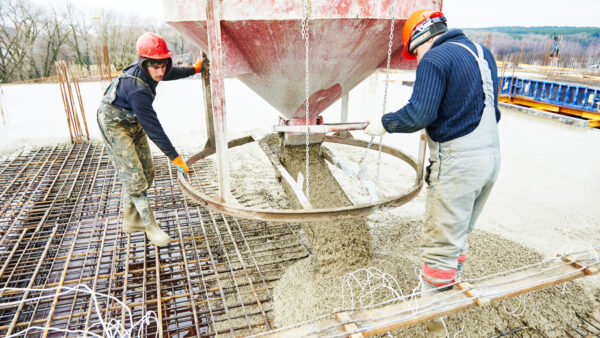
Reinforced concrete probably offers an effective solution to most (if not all) of the construction-related problems because it can be tailored as per requirement. The following are the key characteristics of reinforced concrete.
- The performance of reinforced concrete in tension is equally good as in compression. This is because to offset the problem of concrete’s low tensile strength, steel is added as a reinforcement. One of these reasons of choosing steel as a reinforcing material is that the coefficient of thermal expansion of steel and concrete is comparable.
- RCC members offer ductility and a longer service life in addition to strength.
- RCC members also have good bond strength, partly because of the adhesive property of cement and majorly because of the roughened or ribbed steel surface.
- The steel in RCC members gets passivated by the alkaline environment provided by the concrete. However, if concrete is porous, moisture and air will flow through the pores to attack the reinforcement. Therefore, RCC members must be cured well and the w/c ratio is to be monitored in the design process.
Codes and Specifications for Reinforced Concrete

The specifications provided in the codes act as guidelines for designers and govern the acceptability of a member. Many specifications have been developed for materials and structures and they are based on years of research, experiments, and experiences.
The following specifications can be consulted for reinforced concrete members and structures;
- American Concrete Institute (ACI)
- American Society for Testing and Materials (ASTM)
- American Association of State Highway and Transportation Officials (AASHTO)
Types of Reinforced Concrete Members
Reinforced concrete members can be classified based on the purpose they serve and their behavior under applied loading. Therefore, the following categorizations can be made in this regard;
-
RC Beams

Reinforced concrete (RC) beams are flexural members used to support transverse roof loads such as that of overlying slabs. Under the application of loads, they bend or flex, developing tensile stresses on one side and compressive stresses on the other.
The part of the beam subjected to tensile stresses is provided with embedded reinforcement so that the beam does not crack or fail in tension.
RC beams are very commonly found in all types of structures (residential, commercial, etc.) and they transfer the loads to the underlying columns or walls.
-
RC Columns

RC columns are axial structural elements primarily designed for compression. They bear the loads coming from the beams or directly from slabs and transfer them to the foundations from where it gets dissipated into the soil.
RC columns can be of any shape (square, circular, rectangular, etc.). Depending upon the symmetry of the overlying loads and the column location, an RC column can be an interior column, an edge column, or a corner column.
These columns are reinforced with longitudinal reinforcement (steel bars) as well as transverse reinforcement in the form of ties or spirals. In addition, the end conditions of RC columns can be simply supported, pin ended or fixed ended depending upon whether the concrete is monolithically cast with the beam or not.
-
RC Slabs
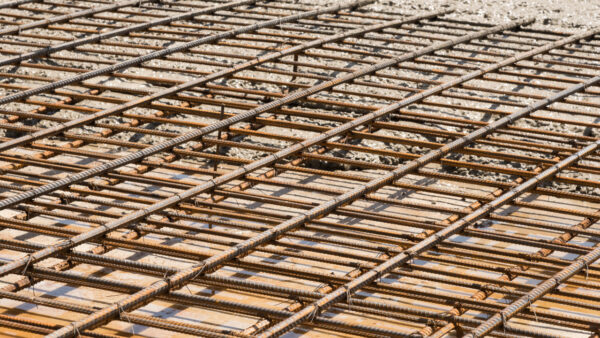
Reinforced concrete slabs may be cast in varying thicknesses depending upon your design. The slabs may be two-way or one-way depending upon the dimensions of one panel cast. In the former case, the slab bends in the form of a saucer and both the longer and shorted dimensions contribute to bearing the applied load. On the other hand, one-way slabs bend in the shorter direction and form a cylindrical shape.
RC slabs are very common in all types of concrete structure and have different shapes. It may be a flat plate, a flat slab with beams, a ribbed slab or a waffle slabs. Different slab designs can be made depending upon your design requirements.
-
RC Foundations

Reinforced concrete foundations such as raft or mat foundation, spread foundation, etc. are very common in construction. Heavy structures constructed on soft soils require strong foundation and a raft foundation is definitely the best choice.
Reinforced concrete is by far the best foundation material owing its versatility, strength and durability.
-
RC Walls

Reinforced concrete walls are vertical members that have greater strength and stiffness in comparison to their masonry counterparts. Using reinforced concrete, walls of greater height can be constructed and they can be both load-bearing or non-load-bearing.
An example of a reinforced concrete wall is a shear wall. This wall is heavily reinforced and is often provided to increase the stiffness of a story in earthquake-prone regions. It also helps impart lateral stability to a story against any anticipated lateral load.
-
RC Stairs

RC stairs can also be constructed in various styles such as a straight stair flight, spiral stairs, etc. They are used to connect two story levels with each other so that people can access different levels of a structure.
Modes of Failure in RCC Members
You will often come across cracks in RCC members, some of which are wide and unsightly. It is important for a structural engineer to investigate the cause of cracking before retrofitting the member. The following type of failure modes may occur in RCC members.
Flexural Cracking
Flexural cracking in RCC members occurs in regions having high bending moments and very less shear. These cracks originate from the tension face of the member and propagate in upward direction towards the neutral axis. These cracks are vertical.
As a result of flexural cracking, you will see the concrete cover spalling off and reinforcement getting exposed. If this happens, it is a warning that the member will not be able to bear more loads and you will need to retrofit it at earliest.
Pure Shear Cracking
Pure shear cracks (also called web shear cracks) occur in the region where shear forces are high i.e., the end supports of the member. These cracks originate at the neutral axis and propagate towards the supports at an angle of 45 degrees.
Pure shear cracking can be avoided by adequate transverse or shear reinforcement in the form of shear stirrups.
Flexural + Shear Cracking
Most of the cracking within the beam span occurs because of combined flexure and shear stresses. In regions where both shear and moment are high, vertical flexural cracks appear first and reduce the cross-sectional area of the member available for resisting shear. As a result, shear becomes critical and the cracks are turned at an angle. These cracks may even then cross the neutral axis if the inadequate shear strength is provided by the member at that particular section.
Bar Pull-out Failure
Bar pull-out failure may occur in reinforced concrete members wherein the rebars gets pulled out, leaving concrete at the fag end of bearing tensile stresses. This mostly happens because of insufficient bond strength of the member.
Reinforcement Corrosion
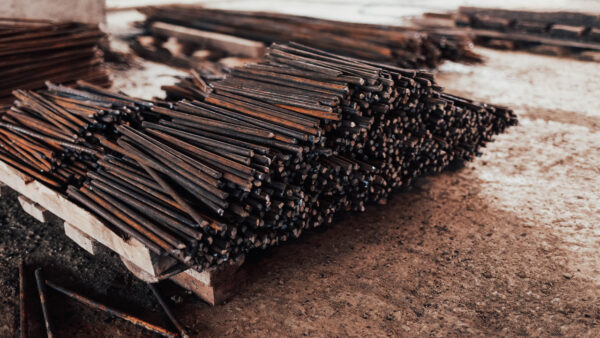
The corrosion of steel reinforcement (also called rebar depassivation) is major durability concern in reinforced concrete. The instant steel reinforcement is attacked by air in the presence of moisture, the steel rusts or corrodes.

The problem with the rusting process being deadly for the steel is that when steel corrodes, rust is formed which occupies more volume than steel. As a consequence, it exerts tensile stresses on the adjacent concrete when it tries to expand. In doing so, the bond between the steel and concrete is lost and the members gets prone to failure anytime soon.
Corrosion in RCC members can occur because of two reasons as follows;
Carbonation Corrosion
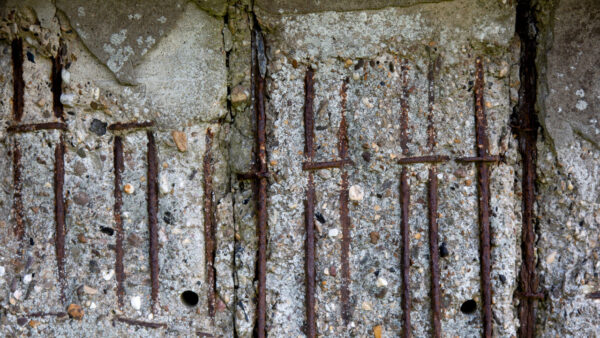
In areas having high emissions of carbon dioxide, when the concrete is exposed to alternate wetting and drying cycles, the reaction between carbon dioxide in the atmosphere and calcium hydroxide in the concrete proves to be an impetus for the corrosion process.
Visual signs of carbonation corrosion include staining, cracking, delamination, pop-outs, etc.
As a general inspection guideline, if the corrosion of a rebar comes with flaking rust over long length, it is usually because of carbonation. However, if the aftermath of corrosion is deep pitting over short lengths, it is normally due to chlorides,
Chloride-Induced Corrosion
If the concrete is porous or when tiny cracks develop in it, the surface chlorides may find a medium to penetrate and reach the reinforcement. When this happens, the passive layer around the rebar gets broken and the steel becomes corroded.
Types of Reinforced Concrete Beams
Singly Reinforced Beams
A singly-reinforced beam has steel bars provided only on the side where tensile stresses are anticipated to be developed.
If the beam is simply-supported and transverse loads are applied, the side opposite to the load will be in tension and the load side will be in compression. On the other hand, if the beam is cantilever, the load side will experience tensile stresses and reinforcement is placed to take up the stresses. The side opposite to the load will experience compression.
The number of steel bars to be placed on the tension side and their grade depends upon your design. For ordinary construction works, grade 40 or grade 60 steel bars are used.
Doubly Reinforced Beams
In cases where there is a depth restriction on the beam size based on some architectural requirement, the capacity of the depth-restricted beam can be enhanced by providing steel in the tension as well as compression side. Such a beam is called doubly-reinforced beam.
The design of doubly-reinforced beam is slightly different from that of singly-reinforced beam. The provided reinforcement on the compression side tends to augment its overall compressive capacity.
Tension-Controlled Under-Reinforced Beams
Under-reinforcement is a term used to indicate that the amount of steel area in a beam is such that the steel will reach its yielding before concrete reaching its ultimate strain. In other words, if the yield strain of steel is less than the ultimate strain in concrete, the steel bars will yield first and show apparent signs in the form of cracking in the tension region.
Under-reinforced behavior in RC beams is always preferred. This is because you will not want a structural member to just collapse the instant concrete reaches its ultimate strength. It is therefore, preferred that the steel yields first, giving signs or warnings in the form of cracking.
Transition Beam Sections
These sections lie in between tension-controlled and compression-controlled sections and the net tensile strain in the extreme tension fibers also lies in between the two extremities.
Over-reinforced Beams
Over-reinforced beams are those in which by the time concrete reaches its ultimate strain, the steel has not yielded. As a result, you will see an abrupt and sudden failure in such cases. In design, it is never preferred to deliberately go for an over-reinforced beam. However, a beam be analyzed for over-reinforced behavior.
Balanced-reinforced Beams
If in a reinforced concrete section, the yielding of steel and crushing of concrete occur simultaneously, we say the section has balanced reinforcement.
The steel strain at failure is what categorizes the section type and its ductility. However, it is to be kept in mind that the final failure or rupture in all types of sections occurs only when the concrete crushes.
Applications of Reinforced Concrete
In current construction works, most of the structures around us are made of reinforced concrete. Its vast applications have made its use a preferred choice over other construction materials. Following are a few examples of where can you use reinforced concrete;
- In ordinary buildings (houses, commercial buildings, plazas, etc.) reinforced concrete can be used in slabs, beams, columns, foundations, walls and other structural elements. Different member geometry and sizes can be achieved as per your design.
- Reinforced concrete is mostly used in bridges. The components of a bridge made from reinforced concrete can be deck slab, longitudinal beams (stringers), transverse beams (floor beams), transoms, bridge piers, piles and pile caps, diaphragms and cross-bracings, etc.
- RCC is also used in the construction of deep foundations such as concrete piles, concrete piers and caissons. In addition, it can also be used in mat or raft foundations that are heavily reinforced to bear huge loads and cover a large plan area.
- RCC can also be used in the construction of concrete dams of all types (gravity dams, arch dams, buttress dams, etc.) It not just makes a stable and impervious dam body but also resists the hydrostatic loading effectively.
- In industrial structures such as silos, tanks, etc. reinforced concrete is often used.
- Reinforced concrete is also used in retaining walls that help in holding back soil or water.
- It is also used in underwater structures because of being a water-tight material. However, the reinforcement in such cases, may be prone to corrosion for which adequate measures ought to be taken.
- RCC is also used in the construction of rigid pavements for airports, runways, sidewalks, and other infrastructure.
- RCC is also used in the manufacturing of road barriers or crash barriers.
Advantages of Using Reinforced Concrete
Reinforced concrete structures are abundantly found in our surroundings. So, what makes this material the best choice when it comes to construction works on the ground, under the ground and even under water? Let us dive into the advantages of using reinforced concrete as a construction and building material.
- Reinforced concrete offers great strength in tension, compression, flexure and shear effects. This is the reason almost all structures made from reinforced concrete perform well and can be designed for any anticipated loading.
- Reinforced concrete makes your structure durable and ensures its longevity as well as serviceability. It is not just resistant to weather affects and erosion, but also resists fire and attack by termites.
- In comparison to steel structures that require periodic maintenance, reinforced concrete structures will require little or no maintenance in their service life. This means that once your structure is constructed, you are done with it and very little or annual maintenance costs will be incurred on part of it.
- You can mold concrete into different shapes and the reinforcement, too, can be suited to the geometry of your structure. In other words, there is flexibility in design when using reinforced concrete.
- In the longer run, reinforced concrete proves to be a less costly material in comparison to steel.
- Nowadays, reinforced concrete can be made from recycling demolition waste of concrete. This is a sustainable approach towards making our planet a better place without affecting the natural environment.
- Reinforced concrete offers great fire resistance and has a high fire rating.
- Reinforced concrete columns have greater member thicknesses and are less prone to buckling in comparison to steel columns.
- Using reinforced concrete, various architectural shapes and surface textures can be given to your structure.
Disadvantages of Reinforced Concrete
A few disadvantages offered by reinforced concrete are given as follows;
- RCC structures have greater self-weight (dead load) in comparison to their counterpart steel structures. As a result, for concrete structures, the dead load constitutes the major faction of design loads.
- The behavior of concrete cannot be predicted with accuracy because of being a composite material. Individual properties of concrete ingredients and reinforcement as well as the manner in which the concrete is handled greatly impact the strength of the overall structure.
- Reinforced concrete has limited industrial behavior and therefore, the use of steel predominates in industrial construction because of steel being able to bear the vibrations from heavy machines effectively.
- Creep and shrinkage problems in concrete may lead to cracking and disintegration of the structural member over time.
- The assumption of elastic behavior in concrete gets repealed as concrete develops inelastic behavior at lesser loads.
- In many cases, reinforced concrete fails because of corrosion of steel reinforcement that breaks the steel-concrete bond at the interface and leads to a pull-out failure in the member. It is important to note that eliminating the vulnerability of steel to corrosion is very difficult; however, preventing steel from corroding during the service life of the structure must be targeted.
Frequently Asked Questions (FAQs)
What is meant by the modulus of rupture (MOR) of concrete?
Concrete’s tensile strength cannot be evaluated experimentally with accuracy. This is because firstly, it is hard to load and grip a member and secondly, the member when subjected to tensile loading fails instantaneously and recording the failure loads is difficult. It is therefore, hard to determine the tensile strength of concrete.
The modulus of rupture is defined as the flexural tensile stress at which a concrete beam starts cracking. The value of MOR is approximately equal to 10 to 15 percent of the compressive strength of concrete. It is an indirect measure of the resistance of concrete to tensile stresses.
What is meant by the grade of steel?
The grade of a steel bar tells us about its yield strength i.e., the stress value at which the bar will experience an increase in strain without appreciable increase in stress.
The phenomenon of yielding in steel is what makes it a ductile material. Once steel gets yielded, its particles rearrange itself to take up more load. Even after reaching its ultimate strength, steel does not fail instantaneously. Instead, it keeps developing strain beyond its peak strength and then ruptures or fails at the breaking stress value.
For instance, grade 60 mild steel has a yield strength of 60 ksi (60,000 psi) or 420 MPa.
What is meant by fire rating?
The term fire rating is used to indicate the resistance of a material or building component to fire. It is expressed in the units of time and the numerical value shows the length of time a material can withstand fire without giving in to its effects.
For instance, if the fire rating of a slab is 2 hours, it means that it can withstand fire for 2 hours before failing or reaching a critical temperature.
The significance of determination of fire rating of building materials is to assess their resistance and establish safety measures beforehand.
What is the difference between cold-worked and hot-rolled steel bars?
Both these methods are used to manufacture steel. In hot-rolling process, large steel slabs are heated at a high temperature to mold them into the desired shape. Doing so might result in a rough surface that can be made smooth by further processing.
On the other hand, cold-forming is one step ahead of hot-rolling. In this method, the hot-rolled steel is tempered by applying pressure that results in plastic deformation. As a result, the properties of steel get improved and better strength and hardness can be achieved.





